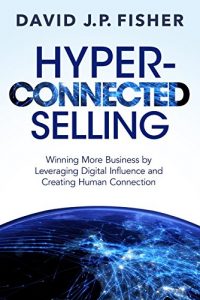 If you are an entrepreneur or business owner, you wear a lot of hats – many at the same time. And one of your most important hats is the “salesperson” hat. (I’m not sure if there is a specific hat just for salespeople, but that would be fun.)
If you are an entrepreneur or business owner, you wear a lot of hats – many at the same time. And one of your most important hats is the “salesperson” hat. (I’m not sure if there is a specific hat just for salespeople, but that would be fun.)
Not only could sales be a full-time job on its own, but now technology has upended how we buy and sell and we have to catch up. From social media platforms to video to ubiquitous cellphone ownership, the way customers navigate the buying journey has shifted dramatically.
If you want to be able to sell successfully in this environment, it’s critical that you understand how technology has changed the buyer’s journey. More importantly, you want to see how to leverage that new journey for your benefit.
Business is going to continue to evolve at a rapid pace, and selling along with it. Here are some important changes that you need to be aware of in the new sales environment:
1. Prospects control the flow of information
In the pre-internet era, salespeople were the ones who had the information that their customers needed. In that scenario, all a salesperson had to do to create value was show up with a brochure and the latest product specs. That doesn’t work anymore.
Now, prospects have access to all the information they need at the push of a smartphone button or a “Hey Siri” request. Data alone isn’t enough to entice prospects. To bring value to the selling relationship, it’s important to provide insights and perspectives that make the buying decision easier for them.
2. It’s harder to make decisions
On first glance, it would seem that easy access to information would make it easier to buy. What’s the point of a salesperson when all of the information is available on the company website?
That may be true with simple products and services, but not in fields where the problems, and the solutions to those problems, are complex.
Sometimes, having more information makes it harder for people to make decisions. Research has shown that there’s an upper limit to how much data a person can parse through. And when they get overwhelmed, they revert to making decisions based on emotion and impulse, which can have damaging effects.
3. It’s easier to not make a decision
All of this seems stressful – and it is. The downside of easy access to information is overwhelm. People have more demands on their time and attention than ever before. It’s harder to make the right decision and there’s more on the line. It can be easier to do nothing at all.
Humans haven’t changed as rapidly as technology has. When you are engaging with your prospects, remember that you are dealing with a person who has very real concerns and fears. You have to make them comfortable on a person-to-person level at the same time you are solving their business challenges.
4. Decisions are made in a larger context
The sales process is no longer linear, it’s a multidimensional cloud of information and influence.
Because the seller doesn’t control the information, they also don’t control the pacing of the sales cycle or other people that might weigh in. Prospects can text 3 people for their opinions, read an online review, and crowdsource feedback on a social media platform…all while at lunch with you.
Not only that, more people need to sign off on buying decisions. It’s important to engage with the various players that can have an impact on the decision-making process. Embrace the opportunity for your prospects to bring in this information, and position yourself as the linking element of all these pieces.
5. Selling is relational, not transactional
All of these changes point to the biggest shift of all. It’s ironic that, in a time of rapid technology adoption, sales has become more relationship-focused than ever. If a product or service can be commoditized and sold using technology, it will be. There’s no need for a salesperson if it’s just a transaction.
But what if you sell something that isn’t a commodity? In that case, be less like a computer and more like a human. The way to navigate all of these changes is to increase your focus on your interpersonal interactions.
Your goal is to become a guide, a Sales Sherpa, who can become a trusted advisor.
Build relationships and create empathetic connections with your prospects and customers. Help them navigate through their buyer’s journey as painlessly as possible. Translate the glut of information so they can take the best steps forward, which often will be with you.
When you do that, you’ll be able to handle the changes that are happening now, and those that will continue to unfold. Good luck!

